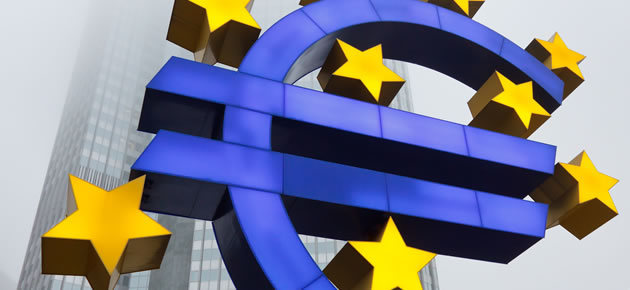The so called Eurozone recovery received yet another round of knocks on Thursday with data releases from member nations and the Eurozone as a whole coming in below forecasts.
As France appears to be heading for another recession, Portugal saw its current account take a hammering and manufacturing data for Germany came in below expectations.
How long will the markets continue to call it a recovery? The majority of recent data releases point instead to a contraction, a back peddle or a weakening. Whatever you want to call it the long hoped for Eurozone recovery appears to have sputtered to a halt.
Both the manufacturing and Services PMI data released earlier in the session saw decline in France. Manufacturing fell from 49.1 to 47.8 in November whilst services dropped to 48.8 from 50.9. Any figure below 50 indicates contraction.
“The French data were a key cause of the decline, but there was also an easing evident in the rest of the region, Output outside France and Germany did rise for the fourth month in a row, suggesting that the region is returning to growth, but the concern is that the rate of increase we saw in November did slide to the weakest we’ve seen in those four months,” said Chris Williamson, chief economist at survey compiler Markit.
Unemployment across the region remains at record highs, inflation is at a four-year low and output across the Eurozone is showing signs of flat lining or going into reverse. The latest piece of data to contradict all the talk of recovery was the latest Eurozone consumer confidence.
According to Eurostat, confidence across the Eurozone fell more than forecast in November falling to -15.4, down from October’s reading of -15 and below economist expectations for a rise to -14.09. The fall in confidence was a result of the weakening economy and the ECB’s action of cutting interest rates to a new record low level of 0.25%.
The Euro managed to hold its ground against the Pound and made gains against the US Dollar after European Central Bank President Mario Draghi talked down the prospect of the Central Bank introducing negative interest rates.
“Don’t try to infer anything from what I say, anything about the possibility of negative rates,” Draghi said. “This was discussed in the last monetary-policy meeting and there’s no more news since then. Let me make this clear.”
Tomorrow sees the release of the latest GDP annual growth rate data and IFO reports for Germany. Italy sees retail sales data released. A decline in those reports will put added pressure on the Euro as concerns over the Eurozone economy continues to rise.
Euro (EUR) Exchange Rates
As of 15:30 pm GMT
The Euro/US Dollar Exchange Rate is currently in the region of: 1.3454
The Euro/Pound Sterling Exchange Rate is currently in the region of: 0.8336
The Euro/Australian Dollar Exchange Rate is currently in the region of: 1.4568
The Euro/ New Zealand Dollar Exchange Rate is currently in the region of: 1.6413
The Euro/ Canadian Dollar Exchange Rate is currently in the region of: 1.4148
The Euro/ Japanese Yen Rate Exchange Rate is currently in the region of: 135.8529
The Euro/Swiss Franc Exchange Rate is currently in the region of: 1.2321
The Pound Sterling/ Euro Exchange Rate is currently in the region of: 1.1996
The US Dollar/Euro Exchange Rate is currently in the region of: 0.7434
The Australian Dollar/Euro Exchange Rate is currently in the region of: 0.6865
The New Zealand Dollar/Euro Exchange Rate is currently in the region of: 0.6093
The Canadian Dollar/Euro Exchange Rate is currently in the region of: 0.7070
Swiss Franc/Euro Exchange Rate is currently in the region of: 0.8116



